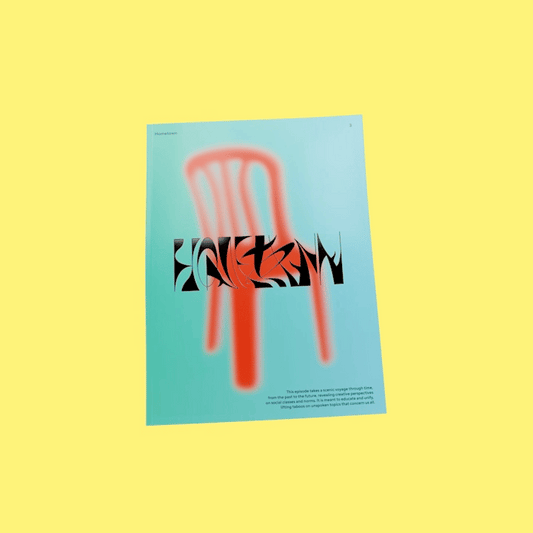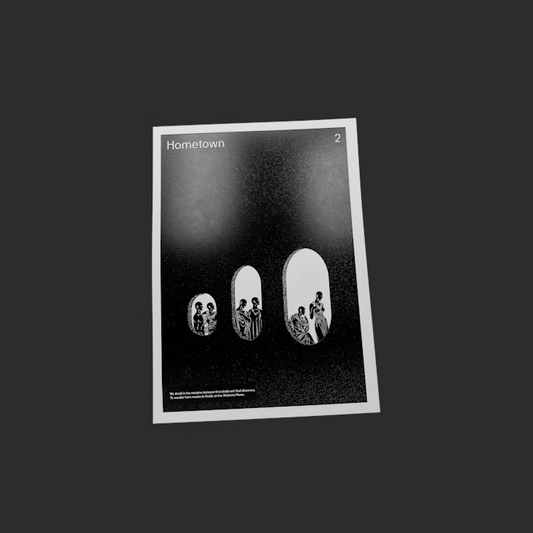Interview by Jan Eric Hühn / Illustration by Stella Murphy / 15min
Stella Murphy turned full-time cartoonist & illustrator about one and a half years ago. After several stops in the graphic and art world, she finally followed her calling finding patience and focus in her work, illustrating abstract and amusing moments inspired by the ordinary everyday. Her posters immediately grab your attention, when her quirky characters start speaking to you.
It was rather early for both of us, just starting into our days we had a virtual coffee together and talked about how her creative journey took the UK-based artist through childhood, to uni, and ultimately freelance work. Why it is important to try new ideas and how structure and chaos belong together. And what thought process went into the poster design she made for our new T-shirt.
But let’s start from the top:
Stella Murphy:
I feel like for people that are creative, drawing is always their starting point to do something within the arts. So basically I can't remember, not doing it.
I would say I'm someone that cannot focus on a lot of things. I'll start a million in a day, but drawing is one of those things I can weirdly, hyper-focus on. I get into a really sort of meditative state. It's always just a really nice place for me.
I did study graphic design. Because … . Well, my parents aren't working creatively. So I didn't really know that illustration was a job at all. Everything I knew came later. Graphic design on the other hand I could quantify. I had been gravitating towards comic-style art in my teens more but Uni is when I really started to hone in on this. I liked those black outlines. I always liked those black outlines. It generally felt more graphic. And I learned how to use typography, which still influences my work up to this point I would say. But also I noticed: I am not a graphic designer. I learned that when I worked as such in my first job. It just wasn't for me. I couldn't do the office environment. Drawing is what I always wanted to do. Illustrating just takes me much closer to that, I think.
Eric:
Regarding your style, Is that a way of drawing you always felt drawn to, or is that something that developed over time?
Stella Murphy:
I've been thinking about this – because what excites me is trying something new. I like experimenting. If I see something – and it happens all the time – I'm like: “Oh my God, I'm really drawn to that. I want to feed that into my work.” But then I also know that it's my full-time job now. I'm aware people are getting to me for the sort of style that I've developed until now.
I feel like for myself, I still want to push my style and want to develop, but at the same time I believe, It's a lot about finding a balance. You can't just get rid of all the stuff that you've worked up to. But yeah, it's still changing basically.
Eric: It's always hard to find that balance between: This is what I'm hired to do, and this is what I like. You quickly get put into a box people. It's a constant: “How can I open up that box?”
Stella Murphy: I guess that's not how it works, right? That's why you've got to do personal stuff. I’m realizing right now that I need to focus on that stuff as well because that's where you can experiment. It's where you can try out stuff that maybe you wouldn't be able to do commercially.
It's both me but I feel like it's too soon to say, this, is it. This is exactly what was always buried inside of me. It's still evolving. Hopefully, I can do this for my whole life. I just don't want to box myself in. I feel like I haven't quite arrived. It's a process, isn't it?
Eric:
It is! Maybe we can actually go a little through your process until this point. And take a look at your work. How did your work evolve in the last years? Can you narrow it down to specific things or do you feel like it's a very abstract process?
Stella Murphy:
I guess it's been always influenced by my surroundings. But especially after I graduated - about seven years ago now - I was working a gallery job where I was pretty much just invigilating. I was just watching the artwork. That was a period where I had a lot of time for free drawing and stuff. That was nice because I didn't have any pressure. I had my job and was drawing for the sake of drawing. So that's when I started getting into narrating stuff because there simply wasn't anything going on. *laughs*
And again in another part-time job working at a vintage poster shop that specialised in Art Deco posters. I was picking up graphics elements, like angular bodies and compositional, feeding that into the work.
Now it's a weird one because I'm full-time. It really has been quite commercially focused. I'm aware that there's still more that I want to do but it's hard because I am financially dependent on it. I have to force myself to try out stuff. To experiment, in order to keep myself relevant and first of all keep it exciting for me.
Eric:
While I was scrolling through your Instagram I noticed these really distinct patterns. The clear focus to a vanishing point.
Stella Murphy:
*Laughs* Yeah, I'm not planning it, it's just how my brain works I guess when working out how it all fits together. Like hat should go there and that should go here. But at the same time, it’s nothing new using a vanishing point to create harmony. It’s just probably why the drawings get better because I'm actually working out to draw properly and it’s unifying my work.
Eric:
It’s interesting you said: “unifying”. Is that something you are actively striving towards?
Stella Murphy:
Yeah, I'm trying to manifest it I guess. I do want to do an exhibition at some point or just like a book. I haven't done that in full colour yet. I've created so much work over the years and only recently I started keeping them all in one place. I have a folder now and when you look through it - it's actually quite a lot. It's nice to see.
Eric:
If we look at your actual work process. How do you work? Do you start digitally, or do you start by sketching by hand? Or is there even a general approach?
Stella Murphy:
I mean I have a lot of sketchbooks. Sometimes I'll refer to those and see if one loose idea could work. So you could say every piece starts on paper.
Normally I plan it out in pencil and then draw it in pen. I scan it and color it in digitally.
I've gotten better over the years. What I used to do was a lot more experimental. I'd be like scanning stuff, collaging, and trying different patterns every time.
I'm working a bit smarter I'd say these days, I have a bigger library of work that I can pull from to create these little signatures.
Eric:
If you say you work smarter, would you say you work also faster? Or is it always depending on the task? On how fast an idea comes to you.
Stella Murphy:
The hardest bit for me is to sort the ideas. The hometown piece was actually a pretty easy one because it was like: “Do what you want” basically. And that's my ideal brief. But if I'm doing my editorial stuff? You've got to sell them on an idea first and thats really hard. I like to simply start drawing and let something happen. But: You can't really sell that. That process can be really laborious. Drawing itself doesn't usually take too long. It's maybe a day and then a few days to color in. If it's going well.
And some stuff just doesn't work, that's when it’s hard.
Eric:
A lot of your work has these little text bits adding a humorous aspect to it. Is there generally something you want to tell with your artwork?
Stella Murphy:
I don't go in thinking: “I want to do an artwork about this, or it’s gonna say this. When I draw these characters, they seem to have a voice. I picture them saying something which makes sense to me, rather than: I'm gonna make a thing about - I don't know, being sad?
Often I use conversations I've had. Some of my friends already have been worried :D
Eric:
While we are at it: Can you tell me a bit about the artwork you made for us?
Stella Murphy:
I remember the brief was that you wanted it to feel like kind of a secret world where all these things are happening. I got that it was like a private world within a world. So I wanted to play around with scale and I had these like tiny little characters and then I was like, Oh well, you know, Jack in the Beanstalk. It's a tiny world happening and there's this giant outside. I really knew that I wanted to do something that felt like happily commented connotations. And I wanted to play around with repetition. So, doing something like a simple form that you can change with some minor features was the route to go down. I was just making life easier for myself, I guess.
Eric:
So, you're lazy. *laughs*
Stella Murphy:
Lazy? Look how many!
Eric:
Well, it's five times the same bean.
Stella Murphy:
But this one's got hair! Yeah, I did have a lot of fun doing this one.
Eric:
I feel like the poster reflects the fun you describe. It’s a beautiful Poster! The drunk little fella lying in the corner on the left. He just puts a smile on my face.
But: Let's go from the present to the future. Is there something you're planning on doing? What’s next?
Stella Murphy:
I feel like I've identified the kind of work that I really love doing which unfortunately is music-related work. There are no budgets in them. Which is yeah - probably not a good route to take financially. But doing poster artwork and album covers is my favorite kind of artwork.
So I'm meeting a lot more musicians lately and joined a run club7 based in South London - Tempo, which is also a chance for DJs to get together. I’m putting the word out and learning to mix myself. Maybe I can put out my own mixes soon and illustrate them. *laughs*
That's the plan.
Eric:
You said you draw a lot from your personal experience, like conversations. How is your everyday life influencing your work? And do you think these two things are connected?
Stella Murphy:
I feel: While I'm basing it on conversations or characters and stuff, it's still my voice. This is what's happening inside my head. While on the outside it might look quite happy, I feel like there's a lot of anxiety inside the drawings. I've definitely struggled my whole life. And there's a lot of those things, those thoughts, inside my work.
I feel like I'm always making jokes and laughing and stuff. So there is always just humor in it but yeah, what's underneath? It's kind of that.
Eric:
That's very interesting. You draw a lot from your personal life and said that there is a very clear set of rules when you are drawing. But then again, on the other side, you say: I just go in and whatever happens happens. I guess these two lines sort of meet somewhere in between?
Stella Murphy:
It's exactly that. It's having these rules, but then also chaos. I'm like routine, routine. Wake up at a certain time, and work regular hours. But then I love the chaos. Dancing, partying, loud crazy electronic music in my ears while I sit peacefully drawing away. Which are completely at odds. I guess it's: I love structure but I also need that element of the unknown and spontaneity. There are both worlds.
I just like these weird rules for myself. I have no idea why. I have to be disciplined in a way, doing freelance. I go in Monday to Friday, from eleven till seven, sometimes longer. It's soothing in a way to have a routine.
I've heard that the guy that used to do Snoopy cartoons would be in his studio from nine to four with allocated windows for doing certain kinds of sketching. I wish I was more disciplined. That I could get going as soon as I get in and sketch before moving on to a job or something. But yeah I think illustrators are weird. *laughs*
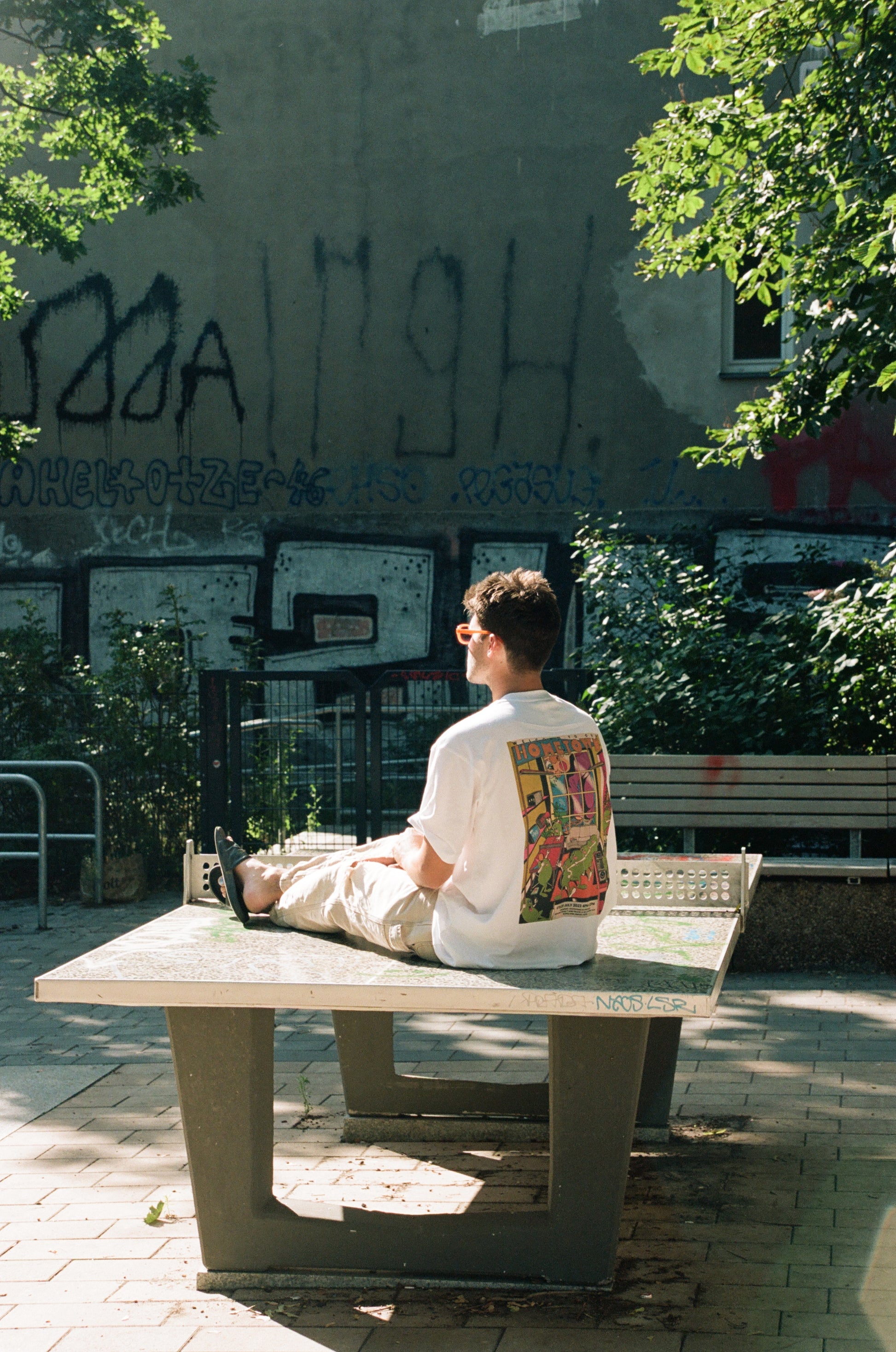
Party Beans - Shirt


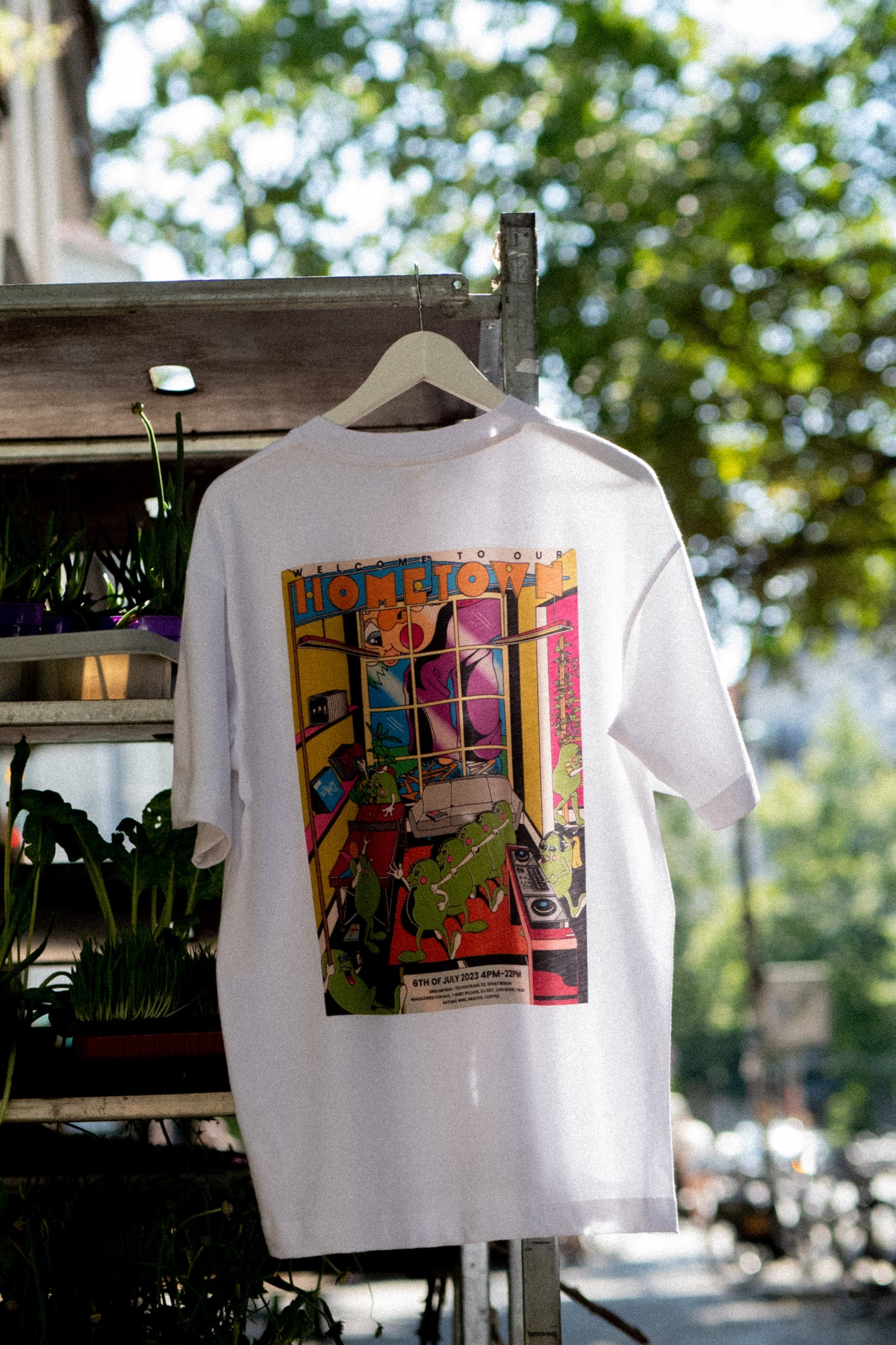
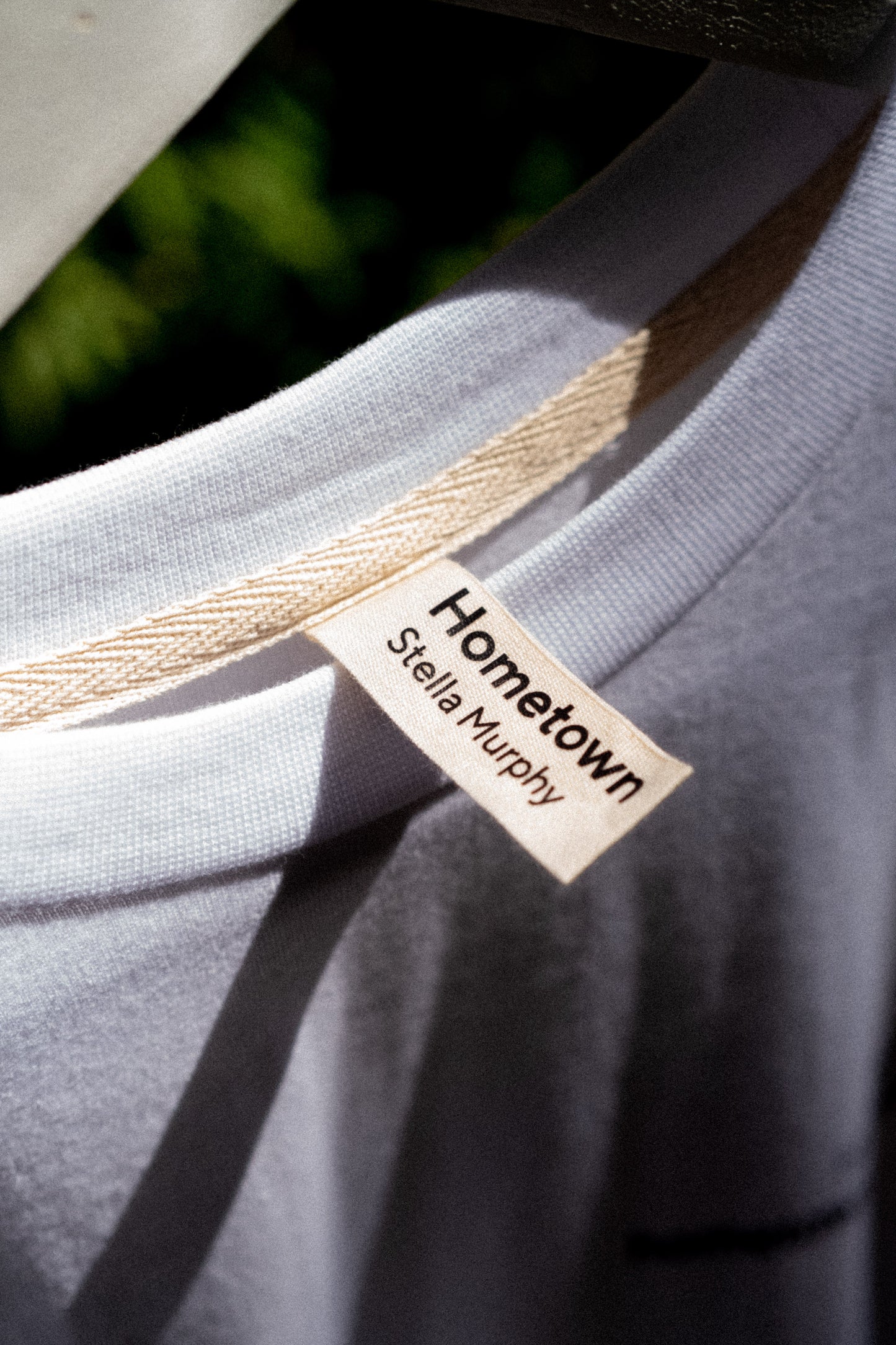
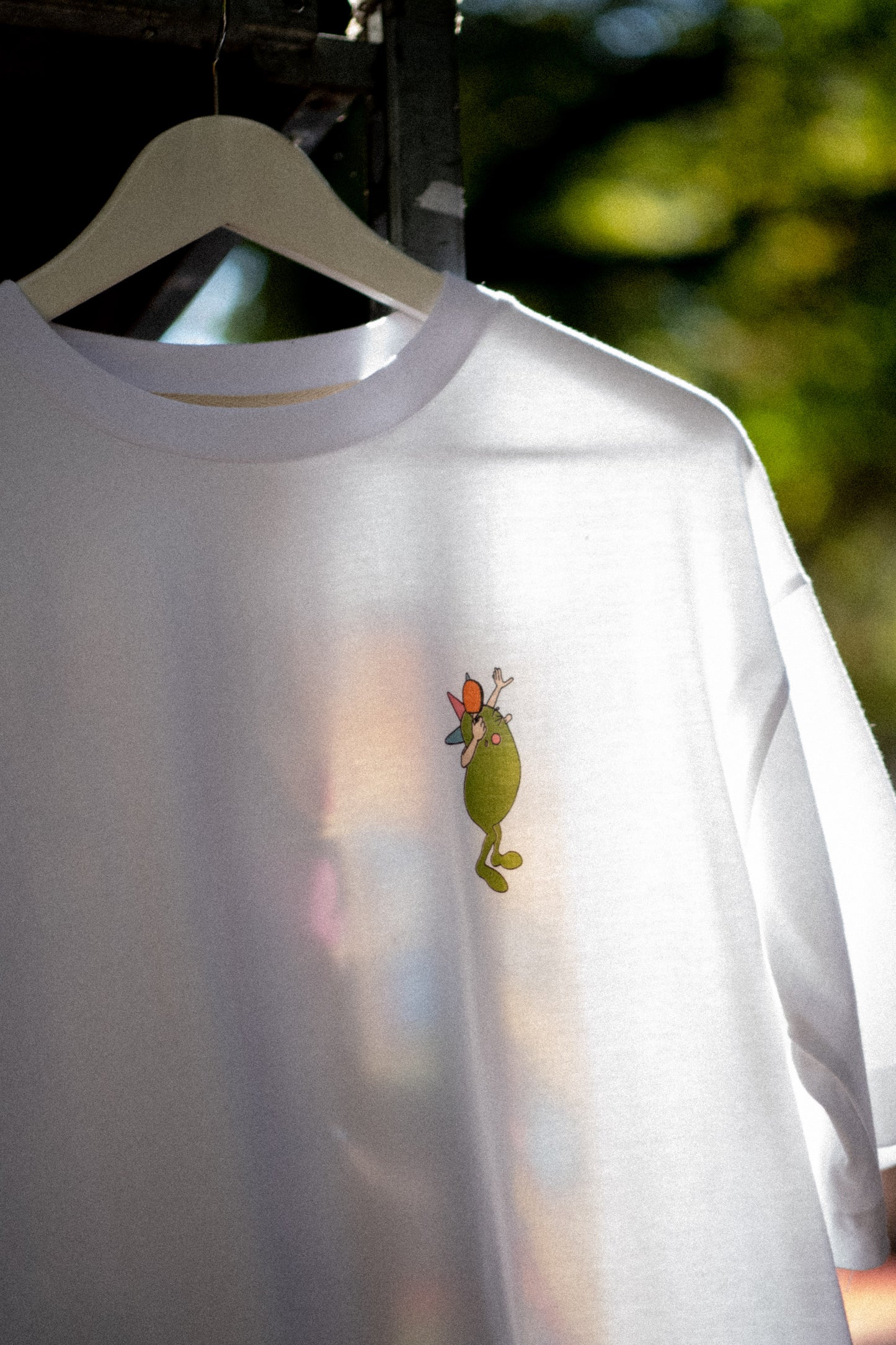
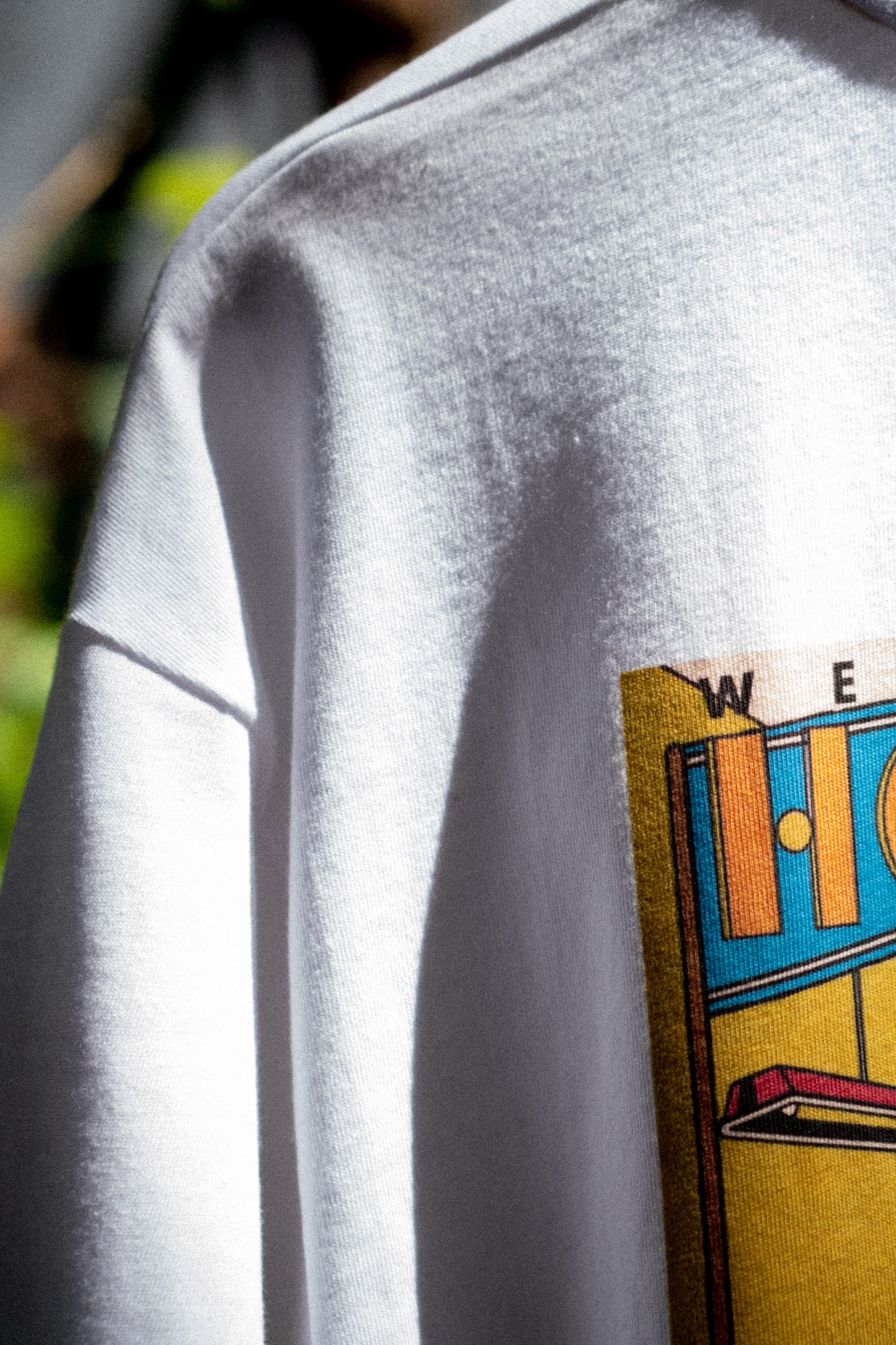
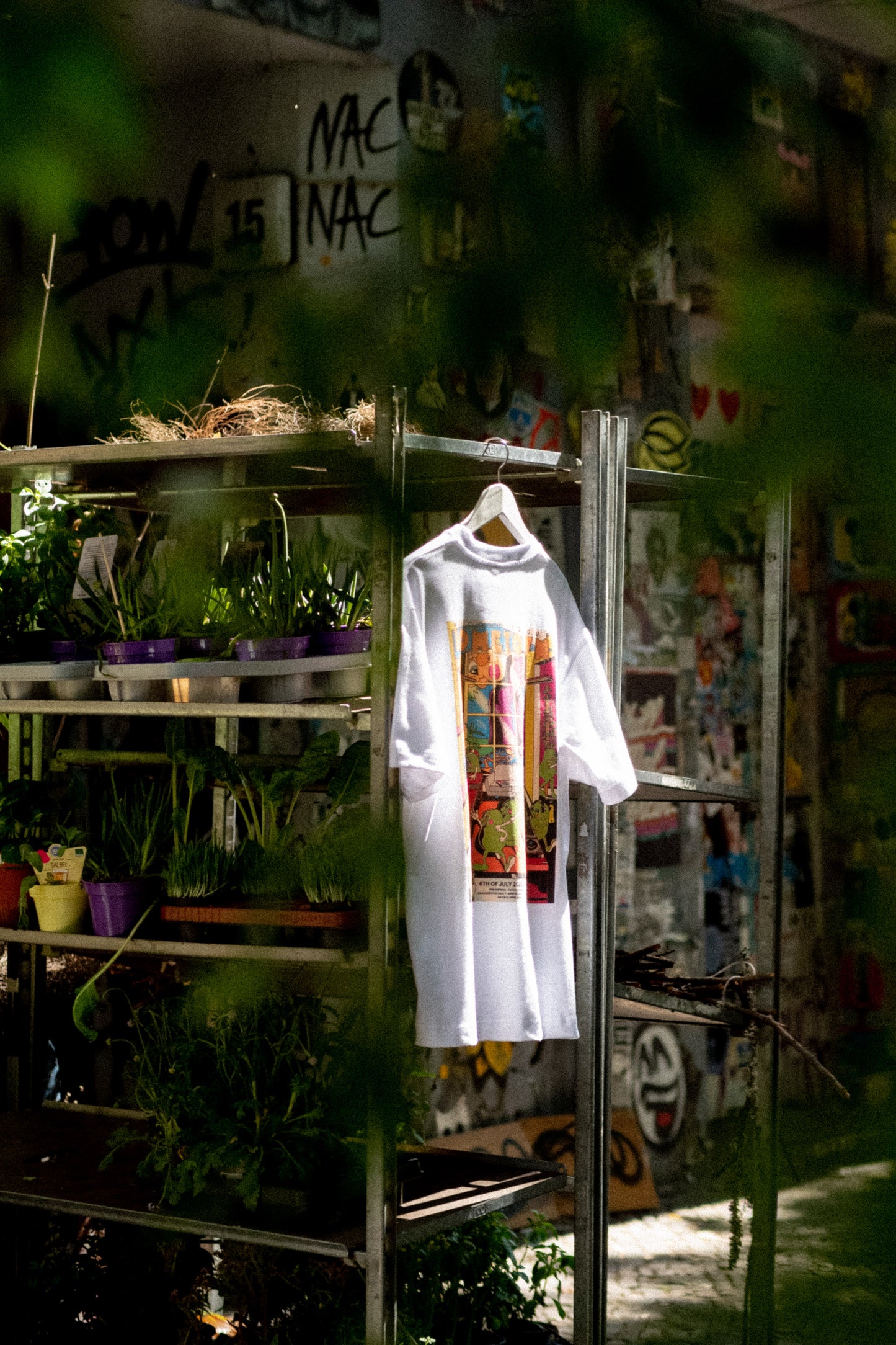
Eric:
Last question to sum it up: Let’s go back to the initial idea of “the journey”. How would you describe the moment within your personal journey? Can you pinpoint yourself at a certain position? If this is the start
*puts up left hand*
and this is the end
*puts up right hand*
at what position are you on that timeline? Where do you want to go?
Stella Murphy:
In the past, I've kind of been narrowing myself. Told myself: The work I make is kind of niche; isn't for everyone. And be happy with what came along. But now I'm at the point where I do actually know what I'm doing. I want to think bigger, like: where can this take me? Where can I go with this? And also my viewpoint and voice is evolving and maybe with that the themes might become slightly different.
I’m trying to find a way to marry it all together. Keeping in mind my most recent influences, experiment, but at the same time: Not undoing all the work that I've done so far.
I want people to like it, but I need to keep it true to who I am. If I'm evolving in the way I choose to present my ideas, it needs to be coming from me rather than because it is cool right now.
Eric:
Thank you, Stella! It was a pleasure talking to you. See you in Berlin!
Stella Murphy:
See you!








